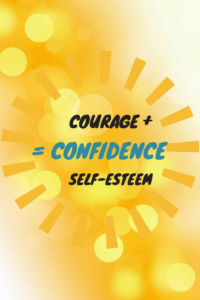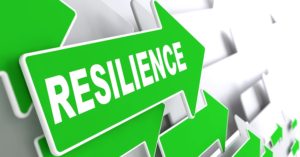A client recently received good news that a job doing what she loved was going to be hers. We discussed what had led her to this moment through our work. and she said that the work we had done around confidence is what had her to new opportunities and an exciting position. Believing in herself was the journey.
Step #1. You have to believe that you are capable of making it happen. Believing in yourself is a choice.
Believing in yourself means taking action toward the goals you set for yourself and in taking action, you gain strength in believing they can be yours.
Step #2. Believing in yourself leads you to give more than what is expected. My client didn’t focus on whether she would be fairly compensated or recognized for more effort. As a result, she succeeded because she gave the people around her — her team, her customers, and her colleagues — more than was expected and, in return, has been rewarded with loyalty, referrals, opportunity, and money.
Taking action

Step #3. Successful people know that the world doesn’t pay you for what you know; it pays you for what you do. So, when she set goals for what she would deliver to her customers, she broke them down into small steps, and then she took action that affirmed her vision around the solution they needed from her — these action steps included believing in herself by getting out there and going for it.
Doubt and Fear
You might be surprised to know how many clients, colleagues, and leaders I talk with share that they are afraid of making a mistake, some have said that they feel like a fraud. some have doubts about whether the actions they are taking will succeed. Successful people have fear, successful people have doubts, and successful people have worries.
Step #4. They just don’t let these feelings stop them. Believing in yourself is a moment-to-moment mindfulness activity! And because of this belief we are willing to experiment, and try new things even when we feel uncertain.
Inaction breeds doubt and fear. Action breeds confidence and courage. If
you want to conquer fear, do not sit home and think about it. Go out and get busy.” –Dale Carnegie
Undermining yourself
Do you find yourself saying things like: “I don’t believe this idea, this job, this situation will work for me?” Or, “I don’t believe in myself, my ideas, my ability to do this.”
Step #5. The biggest difference between successful people and unsuccessful ones (in business, and in life) is that successful people are determined to make the situation work for them rather than searching for reasons why a situation won’t work. Think of your mind as a suggestion machine, dedicated to keeping you safe, from making mistakes, from being embarrassed. It thinks it is protecting you from harm – something it was programmed to do to keep you safe from real danger. Most likely you will feel discomfort in pushing yourself past negative thoughts. Therefore, this is when you begin to test whether that is true and take small steps toward the goal you set for yourself. Your job is not to judge yourself, but to step forward with all you have within you in any given moment. Let the world choose.
Self-Confidence
Believing in yourself is the beginning of a journey to self-esteem and self-confidence. It’s a journey you can only take in your own mind, and through your own actions. The true joy of believing in yourself lies in unleashing your gifts and offering them to the world.
Self-confidence is a quality you can develop. Start this moment to believe in yourself and your future will thank you.
For more suggestions on believing in yourself as part of your own success, you may be interested in this article. Share your thoughts below on what has helped you believe in yourself.


 Do you have a vision for your life? Does that include the financial side, and your ability to financial support the people and ideas you care about? Have you taken that dream, that vision, and quantified it into actual measurable goals? You must include financial goals in your goal setting. The key is breaking them down into small action steps, habits, and practices on a daily, weekly, monthly, and quarterly basis. This is the moment where you strengthen your belief in yourself as capable of achieving them. Then, get out there and go for it! When you FOCUS and take action toward measurable goals, you trigger other universal energies that lead you toward success.
Do you have a vision for your life? Does that include the financial side, and your ability to financial support the people and ideas you care about? Have you taken that dream, that vision, and quantified it into actual measurable goals? You must include financial goals in your goal setting. The key is breaking them down into small action steps, habits, and practices on a daily, weekly, monthly, and quarterly basis. This is the moment where you strengthen your belief in yourself as capable of achieving them. Then, get out there and go for it! When you FOCUS and take action toward measurable goals, you trigger other universal energies that lead you toward success. ending it, they take the time to create financial plans which enable them to reach long-term goals, and then they stick to those plans. If we can change our hidden money beliefs and adopt a financially successful mindset, sooner or later we will become financially successful in reality, and in the meantime, we will FEEL financially successful.
ending it, they take the time to create financial plans which enable them to reach long-term goals, and then they stick to those plans. If we can change our hidden money beliefs and adopt a financially successful mindset, sooner or later we will become financially successful in reality, and in the meantime, we will FEEL financially successful.





